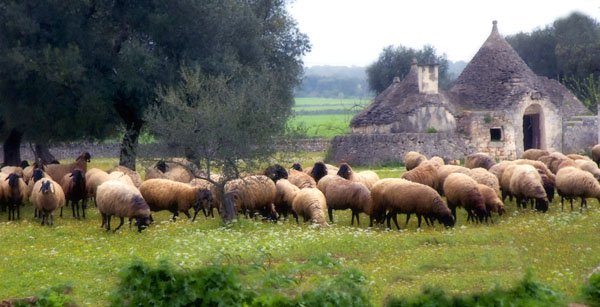
Trullo by Henri Louis Hirschfeld
Where
Once part of Magna Graecia, Puglia (Apulia) borders Campania and Basilicata to the west and the Adriatic and Ionian Seas to the east and south. It is a beautiful region with white sandy beaches and unique architecture in the form of conically-shaped dry stone huts called “trulli” that hark to the Bronze and Stone Ages. The interior geography of Puglia is made up of plains and low hills with the limestone Gargano Promontory forming its northern sub-region. Sometimes called the spur on the heel of Italy’s geographic boot, Gargano is actually part of a 30,000-acre national park that juts into the Adriatic. Essentially, Puglia is Greek in spirit both because of its relative isolation from the rest of Italy and due to its close proximity and historical connection to Greece. Because it is separated from outlying regions by the Apennine Mountains on its eastern border the strong Greek influence on the culture and cuisine has endured.
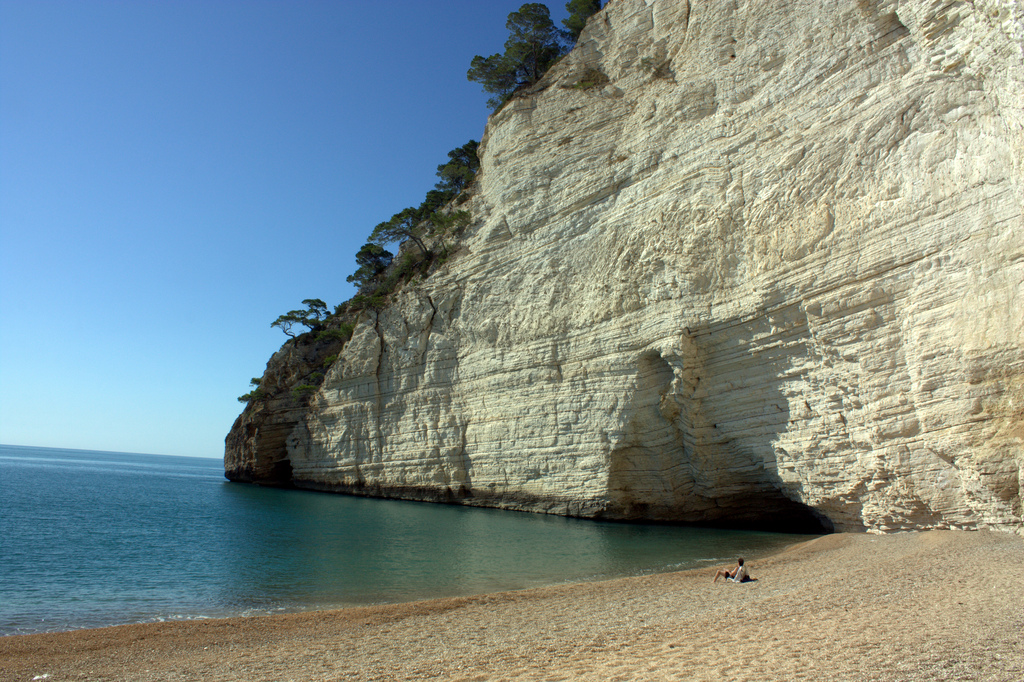
Gargano by Andrea Stefanini
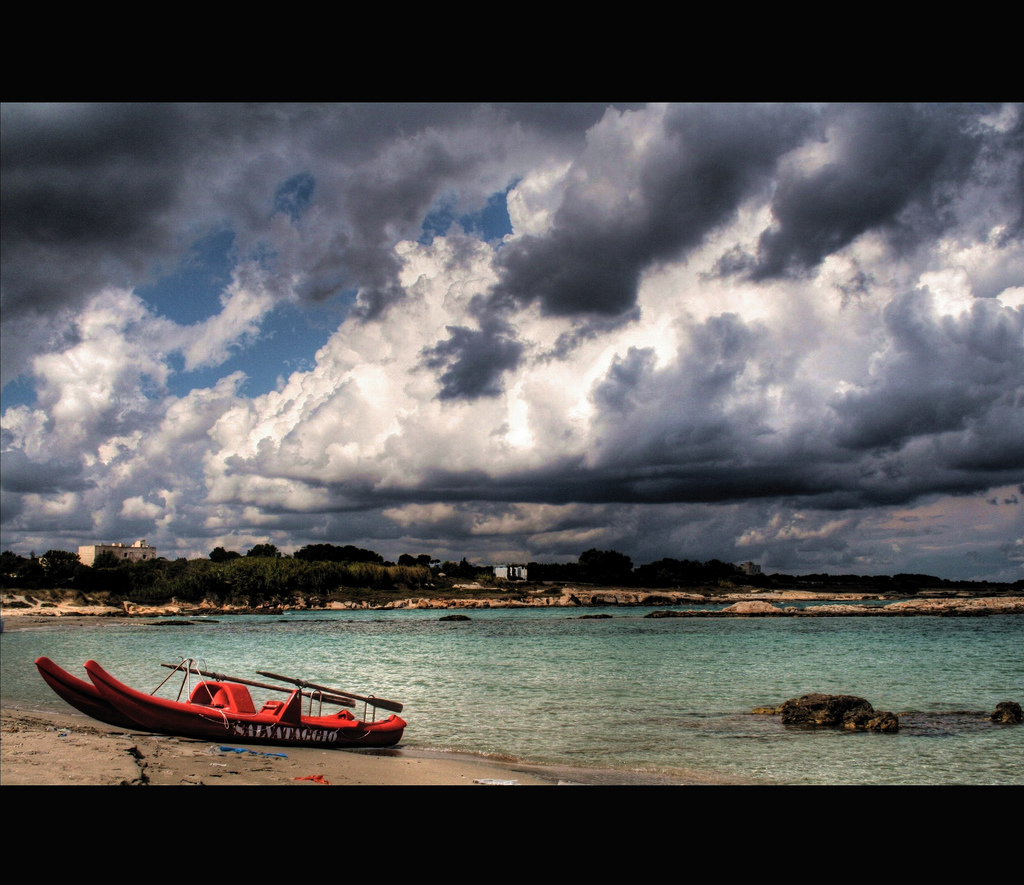
Clouds by Cinzia A Rizzo
Apulians are known for seldom smiling but also for being very generous, honest, and frank. They are known for giving a rough first impression but once you earn their friendship and trust, they will share whatever they have with you, no matter how little.
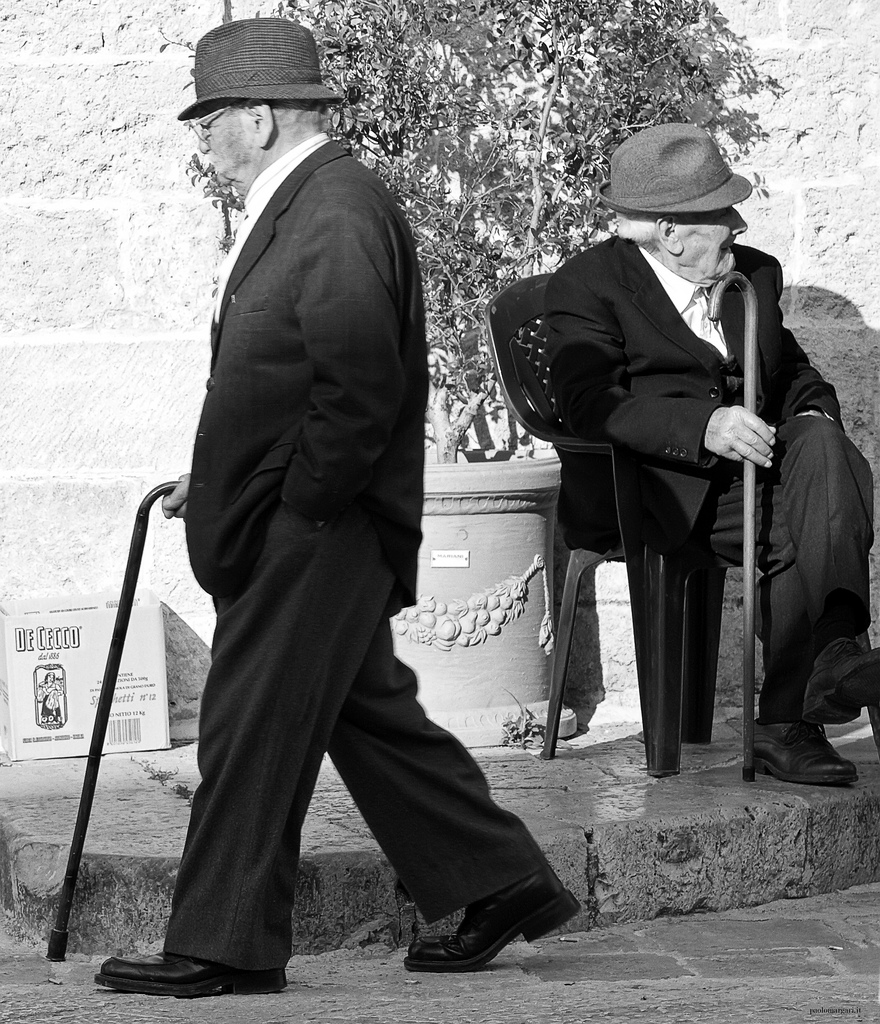
Old Men in Specchia by Paolo Margari
Puglia is known as the garden of Italy, as the land is fertile with mild winters and long summers producing excellent vegetables, fruit, wine, nuts, olives, grain, and cheese.
What to See
The coastal drive between Barletta and Peschici is particularly scenic. Near Barletta there is Castel del Monte (a 13th century Norman castle). South of Bari there are the Grotte di Castellana, karst limestone caves stretching more than 3 kilometers long.

Castellana Caves by Simona Moscadelli
The conical houses, known as Trulli, in Terra dei Trulli (the region between Fassano, Ostuni, Martina Franca, and Albarello) are remarkable in their architecture with their characteristic mushroom cap roof. Albarello, where one finds exceptional examples of these ancient dwellings is a World Heritage Site and a good place to visit the Trulli.
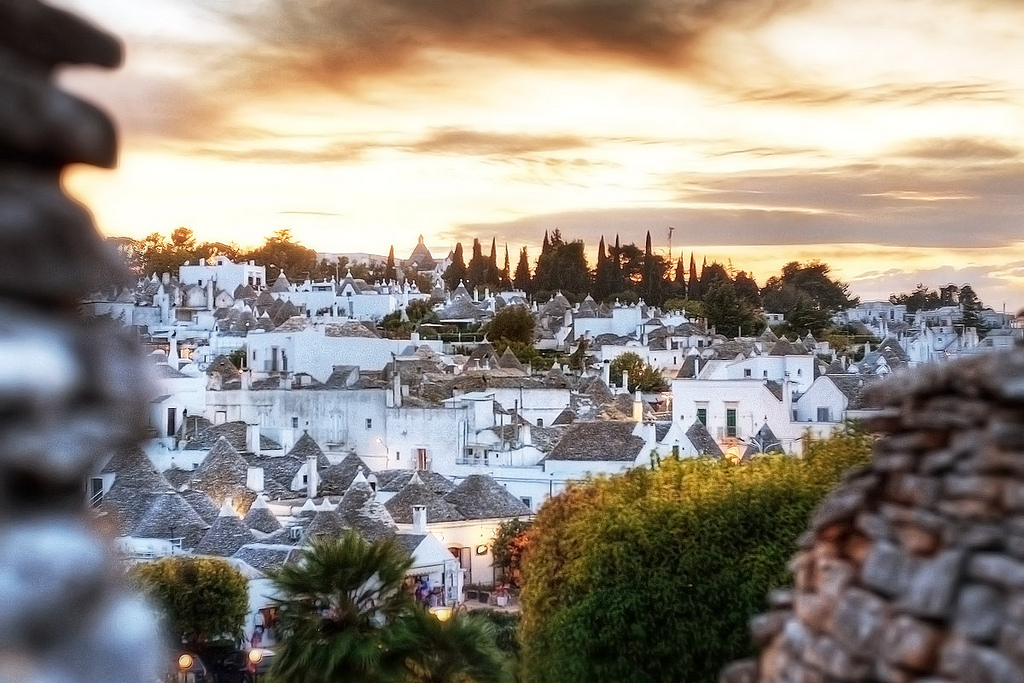
Trulli in Alberobello by Luca Moglia
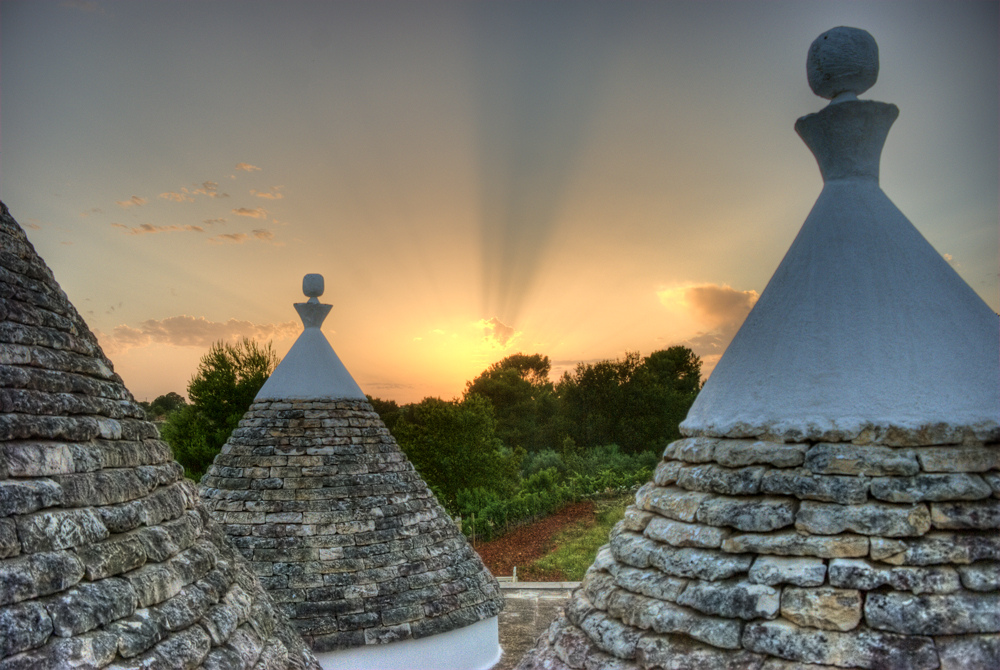
Trulli houses by Dorli Photography
The Promontorio del Gargano (Gargano Promontory) is a stunning corner of Italy with its limestone point jutting out into the sea. The coastline (Vieste) and the forests (Foresta Umbra) are worth exploring, and a boat trip around the Tremiti Islands would never be forgotten. Nearby is the town of Foggia, especially notable as it is where my husband’s grandfather comes from!
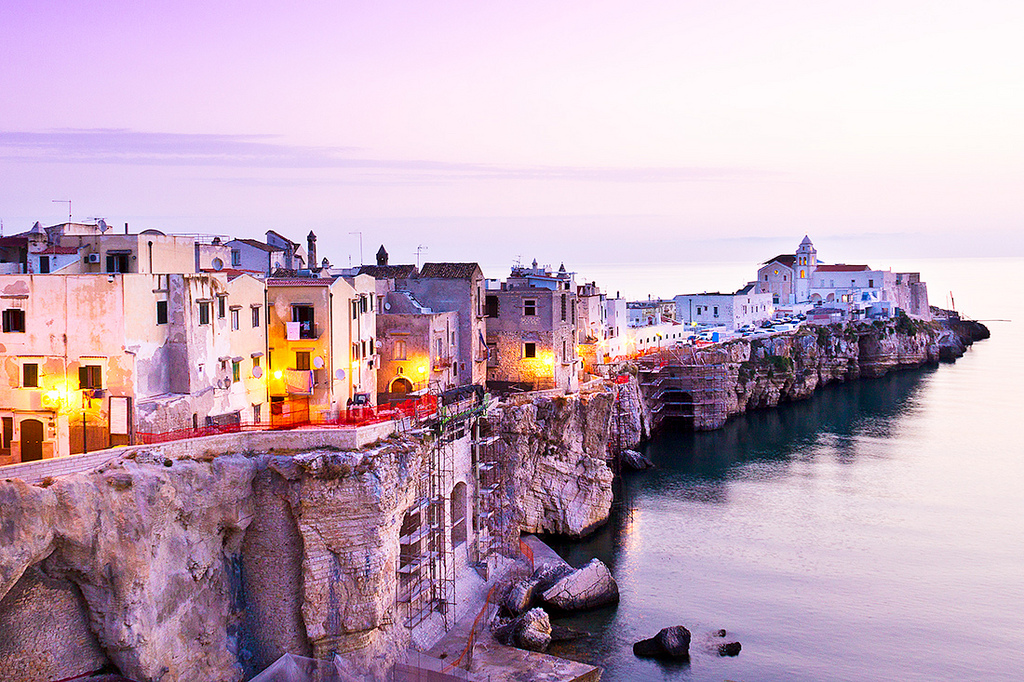
Vieste by Castgen
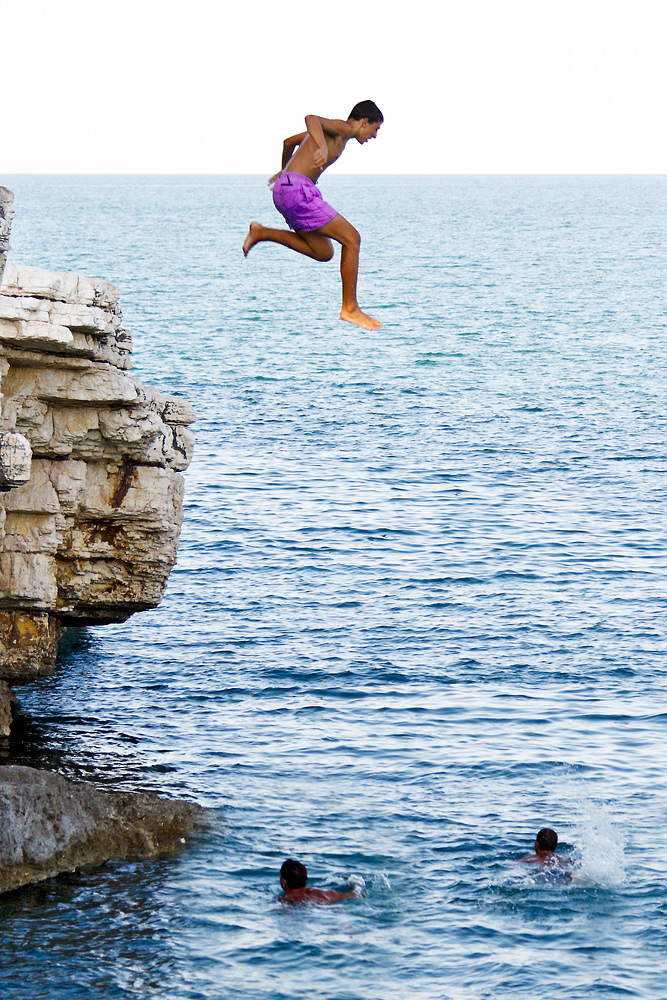
Jumping in the Sea by Castgen
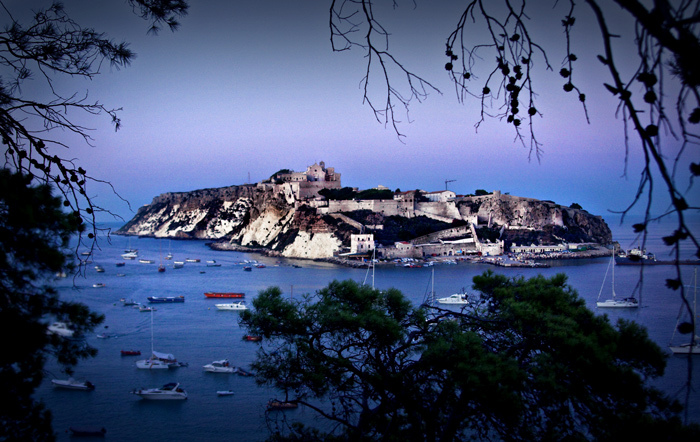
Tremiti Islands by Carlo Cravero
Lecce, a Roman town with a Baroque historic centre, is a gem among many in Puglia. In particular, the old town (Baroque Lecce), the Basilica di Santa Croce (Church of the Holy Cross) and the Piazza del Duomo (Cathedral square) should not be missed.
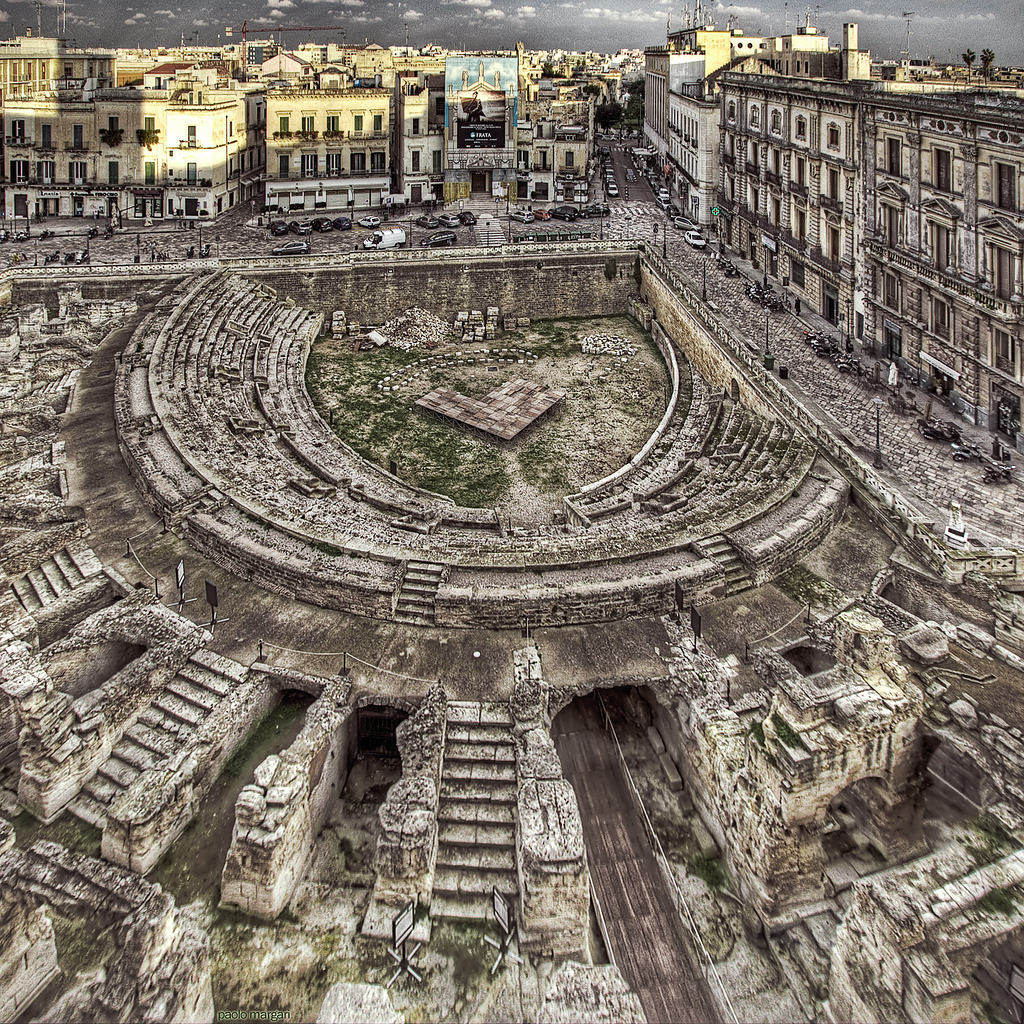
Roman Amphitheater in Lecce by Paolo Margari
In Taranto, visit the Museo Nazionale Archeologico di Taranto (the Taranto National Archaeological Museum) to see Greek and Roman artifacts.

Laghi Alimini near Otranto by Andrea d’Alba
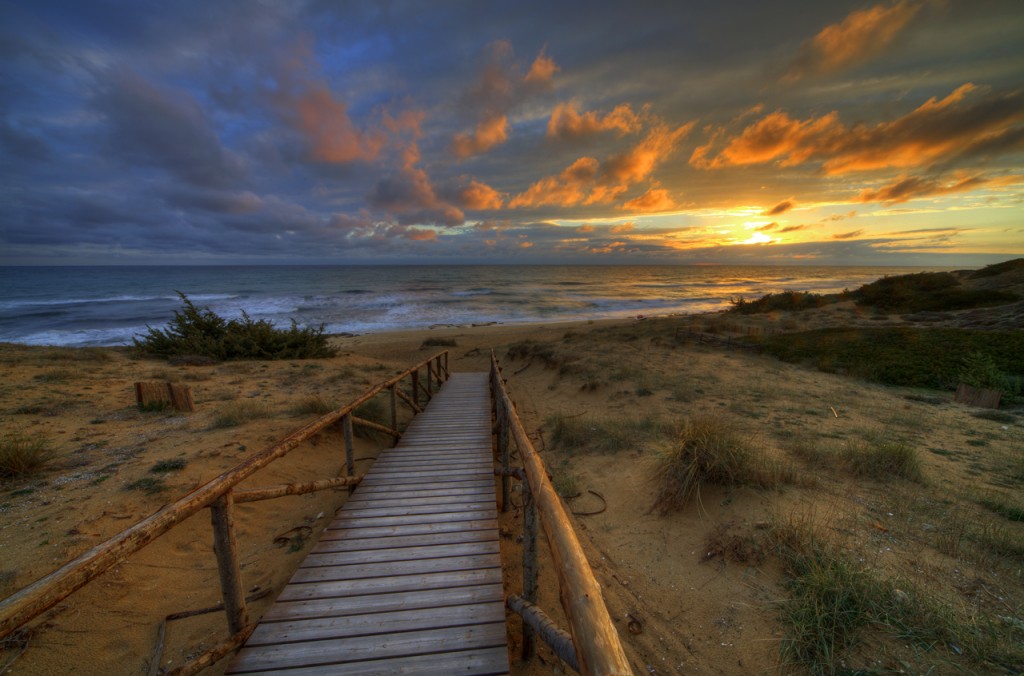
Manduria by Giovanni Orlando
Other scenic towns to explore include: Locorotondo (a village with a round historical centre which makes white wine), Pietramontecorvino (a village surrounded by the Daunia mountains which is known for its salami), Roseto Valfortore (a medieval village with a river running through the town; known for its honey and truffles), and Specchia (a gastronomic village known for olive oil).
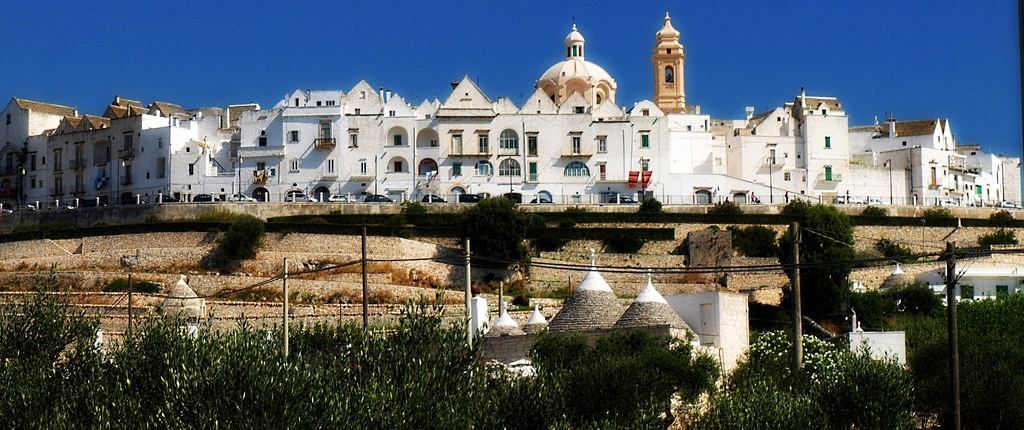
Locorotondo by Serdir
Places to Visit:
Caffè Tripoli
Via Garabaldi, 35 Martina Franca (Taranto) Tel: +39.080.4805260Try traditional pastries like bocconotti, granite, and gelato.
Bring home olive oil, dried pasta, dried fruit, almonds, hazelnuts, and stuffed figs.
The Larder
The ingredients used in Puglia reflect a land of shepherds, farmers, and fishermen. The most iconic ingredient in Puglia is the plum tomato. Other typical local ingredients include lamb, olives and olive oil, cheeses from Andria and Gioia del Colle, vegetables from Salento, and oysters and mussels from Taranto. Puglia is Italy’s largest olive oil producing region. Apulians like to dry local vegetables such as aubergine, tomatoes, onions, peppers, lampascioni (wild grape hyacinth bulbs), and green and black olives and then preserve them in olive oil infused with oregano. There are some regional differences within Puglia such as that garlic is preferred in the north, a mixture of onion and garlic in the centre, and onion is preferred in the south.
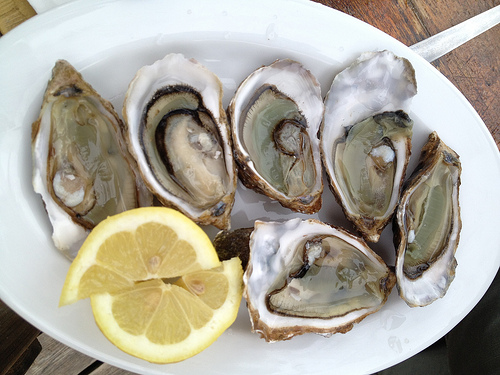
Oysters by Federica Piersimoni
Durum wheat is grown in Puglia, so bread and dry pasta are important. There are also many types of rustic homemade pastas which tend to be made without the addition of egg to the dough. Signature shapes of the region are cavatieddi, orecchiette, troccoli, chiancaredde, and strascinati. Apulian breads are considered to be particularly tasty and since they are made with durum wheat they tend not to go stale as quickly.
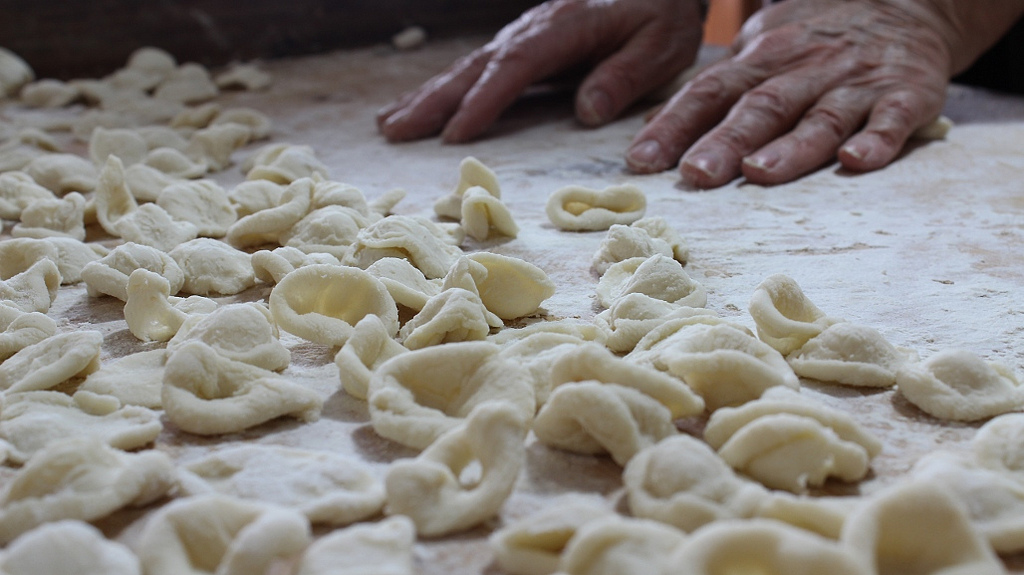
Making orecchiette by Giuseppe Masili
Meats eaten here include lamb, mutton, fowl, game, horse, beef, and pork, though what meat is utilized, is used sparingly. The region is known for its small, hard, but flavourful salamis. Seafood is more popular than meat. Shellfish such as datteri di mare (sea dates), ricci (sea urchins), cannolicchi (razor clams), tartufi di mare (clams), cozze (mussels), calamaretti (baby squid), and ostriche (oysters) are well-loved.
Dairy produced locally include mozzarella, trecce, burrini, manteca (stretched curd filled with ricotta milk fat), and burrata (stretched cow’s milk curd filled with creamy stretched curd and whey). Canestrato Pugliese DOP (a firm ewe’s milk cheese), ricotta forte (a fermented goat’s and/or ewe’s and/or cow’s milk whey cheese), and scamorza (a soft, stretched ewe’s milk cheese) cheeses are all produced locally.
Other typical ingredients include yellow and white melons, figs, lemon, local jams, cotognata (quince preserve with lemon juice and zest), dried fruit, stuffed figs, Regina grapes, coconuts, peppers, broad beans, zucchini, fennel, broccoli rapini, artichokes, cauliflower, potatoes, spinach, chard, chicory, turnip tops, puntarelle, escarole, marasciuli (wall rocket), caccialepre (common bright-eyes), wild fennel, grespigno (field sow thistle), chickpeas, lentils, beans, honey, almonds, , hazelnuts, and anchovies.
Menu
The cooking in this region is a reflection of its pastoral, agricultural, and maritime history. This cooking, with its roots in the peasant way of life, is affectionately called “la cucina povera” (cooking of the poor) by locals. But in its variety and richness of flavours, we can say that it is the poor man’s feast. Taralli or friselle, small, hard, baked rings of bread, once an essential food to take to sea or to have on hand in hard times, are Puglia’s ubiquitous snack food today. Pasta is much loved here, as well as soups and rice. For recipes from Puglia, see here.
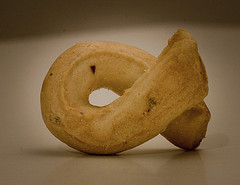
Taralli by Nacho Romero
One cooking method which was created from the need to have something on hand for dinner after a long day working in the fields is the tiella or teglia– a dish where ingredients such as fish, potatoes, rice, vegetables, cheese, and shellfish are combined with water or broth, olive oil, herbs, and garlic or onion and baked slowly in an oven.
Many of these dishes were traditionally cooked clandestinely in bakers’ ovens. Historically, ovens were illegal due to the risk of fire but also because the government ovens provided a source of revenue for the state. Illegal structures were often constructed in the countryside to circumvent this regulation.
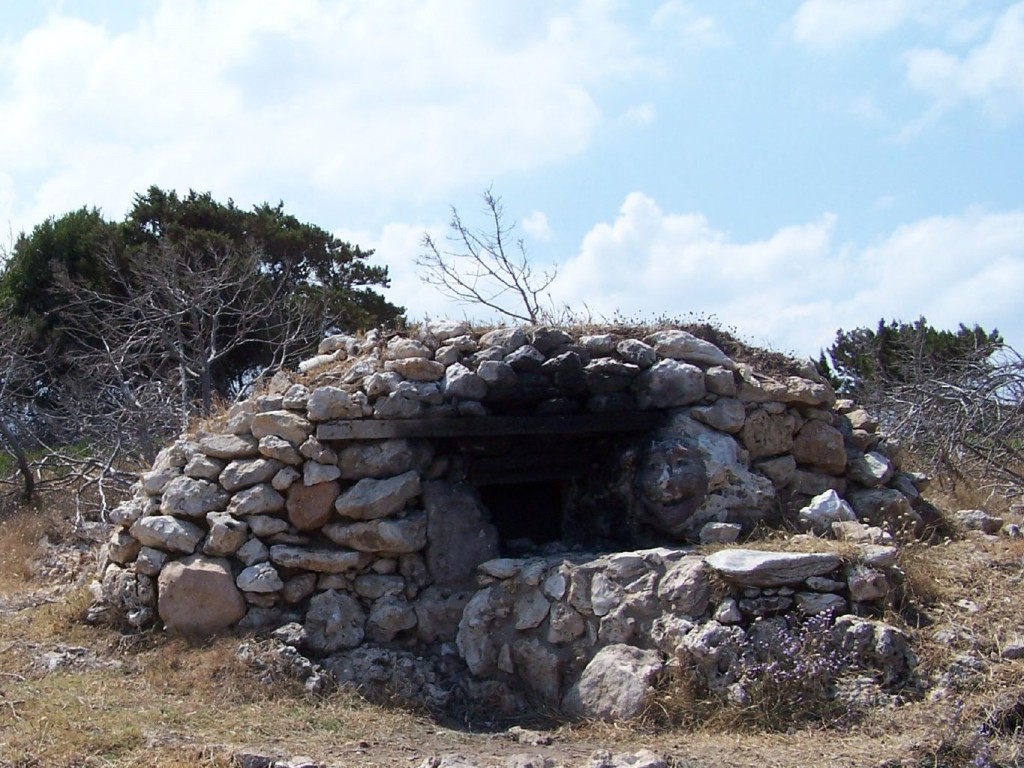
Old oven by T’nello
Puglia has some very distinctive dishes such as calzone (a stuffed folded over pizza), puddica (pizza with onions, tomato, garlic, olive oil, and oregano or raw seafood), pizza di patate (potato pie), pizza di verdure (pizza topped with vegetables), panzerotti / calzuncieddhi (fried focaccia filled with different mixtures: onions, black olives, capers, anchovies, pecorino cheese, and cherry tomatoes; fried onion and ricotta cheese; ham and cheese; anchovies; sautéed greens; or mozzarella cheese, eggs, and parsley), and frisedda (a filling salad of dried rings of bread soaked in water and dressed with chopped tomatoes, oregano, salt and olive oil and eaten by people in the countryside at midday in the warm months).
Unlike most of Italy, Apulians mix the pasta course with the main course in dishes such as pasta served with stuffed aubergines or peppers, pasta al forno (baked penne or ziti moistened with tomato sauce and combined in a casserole with meatballs mozzarella cheese, then topped with more tomato sauce and pecorino cheese), lanache di casa (fresh tagliatelle pasta served with stuffed mussels), or orecchiette with lamb shanks, tomato, and aged pecorino cheese.
Fish and seafood are eaten more often than meat and are usually prepared baked, fried, or in the tortiera (a layered casserole) in many different versions. Feasts are comprised of roasted lamb or goat, cheese, wine, and dessert. There are many desserts which have a Greek influence like those made with honey like carteddate (fried, ribbon-like strips of sweet dough), with almonds like mustazzueli (almond biscuits) and cupeta (almond brittle), and those made with ricotta like cassata.
Puglia is known for strong and flavourful red wines made with Uva di troia, Negro amaro, or Primitivo grapes. Look for Uva di troia/Nero di troia grape based wines from Castel del Monte by producers such as Rivera, Torrevento, and Santa Lucia. The best examples of Negro amaro grape based wines are labelled Salento IGT or Puglia IGT and are produced by Agricole Vallone, Conti Zecca, Feudi di San Marzano, Libera Terra, or Morella. Good producers of Primitivo grape based wines include Morella, Recchia, Castel di Salve, Terra di Sava Luccareli, and Pasquale Petrera Fatalone.
There are also nice rosé wines made from Negro amaro and Primitivo grapes which should be enjoyed young. Good producers of rosé wines include Leone de Castris and Rose del Golfo.
What to Eat
A list of typical dishes from Puglia (the most classic dishes are written in bold):
Pane (Bread)
Pane di Altamura PDO (a sourdough durum wheat bread baked in a wood-fired oven)
Pizzo (olive bread)
Scanata (durum wheat and potato bread)
Taralli (crunchy ring-shaped biscuits which can flavoured with chilli or fennel seeds; taralli dolci refer to sweet taralli, served for dessert or as a sweet snack)
Salumi (Cold Cuts)
Many of the salumi are named after their place of origin and have been made since ancient times.
Capocollo di Martina Franca (smoked, dried, cured pork loin flavoured with cooked wine and spices)
Cervellata (cooked beef, kid goat, and lamb sausage flavoured with garlic, basil or parsley, and pecorino cheese)
Cervellata di Martina Franca (cooked pork and beef or pork sausage flavoured with fennel seed and red wine)
Salsiccia di Ginosa (pork sausage flavoured with black pepper, chilli, fennel, and saffron)
Soppressata di Martina Franca (cured pork leg and shoulder flavoured with white wine or cooked wine)
Antipasti (Starters)
Benedetto (hard-boiled eggs with soppressata or salami, ricotta, and orange – traditional for Easter)
Caroselle sott’aceto (pickled wild fennel flowers)
Cozze fritte (deep-fried breaded mussels)
Focaccia di patate (potato flatbread topped with tomato)
Fresa / Frisedda (a salad of dressed, rehydrated bread rings with chopped tomatoes, oregano, salt, and olive oil)
Pane purecasciu (bread topped with onions and tomatoes)
Pettola / Pettula / Pittula (fried, stuffed savoury pastry with potato, salt cod, cauliflower, raisins, anchovies, broccoli, pine nuts, onions, tomatoes, and olives, traditional for Christmas)
Puccia pugliese (filled, round, soft, olive flatbread or a durum wheat yeast-risen flat bread filled with either pickles and ricotta, or sausage, salami, anchovies, cheese, onions, tomatoes, and olives)
Puddica (pizza with onions, tomato, garlic, olive oil, and oregano or raw seafood)
Rustico (filled puff pastry pizza with béchamel sauce, tomato, and mozzarella cheese or focaccia bread filled with sweet red onions and ricotta forte cheese)
Scalcione (filled pizza halves with anchovy-flavoured greens)
Scapece gallipolino (pickled fish with saffron)
Schiuma di mare (dressed raw anchovies with olive oil, lemon juice, and pepper)
Sfogliata / Pizza sfoglia (rolled bread flavoured with olive oil and wild fennel flowers)
Torta rustica (filled puff pastry pie with eggs, prosciutto, and mozzarella, ricotta, and caciocavallo cheeses)
Primi (First Courses)
Calzone con lo spunzale (bread filled with leeks, anchovies, olives, and olive oil)
Calzone di carnevale (bread filled with veal, eggs, and ricotta and scamorza cheeses, traditional for Carnival)
Cavatelli / Cavatieddi (shell-shaped pasta served with cooked rocket, tomato sauce, garlic, and onion, sometimes with anchovies and chilli)
Cialdedda / Cialledda (soaked stale bread in broth with tomato, onion, and oregano or parsley)
Ciceri e tria (a mixture of boiled and fried fresh pasta with chickpeas flavoured with garlic, tomatoes, parsley, bay leaf, celery, spring onion, potato, olive oil, and chilli)
Cocule (potato or aubergine, pecorino cheese, and breadcrumb dumplings served in broth)
Grano stumpatu (pearl durum wheat grains served with ricotta forte and pecorino cheeses and meat sauce; legumes and vegetables; or tomato sauce and pecorino cheese)
Làgane al sugo di anguilla (dressed pasta sheets with tomatoes and eel cooked in garlic, parsley, and basil)
Làgane di San Giuseppe (fresh pasta sheets served with tomato, basil, and garlic sauce and anchovy, almond, and breadcrumb sauce)
Lanache di casa (fresh tagliatelle pasta served with stuffed mussels)
Minestra di broccoli alla romana (Roman broccoli soup with lardo, tomato sauce, garlic, pork rind, and broken spaghetti pasta)
Minestra di fave bianche (cream of white broad bean soup with olive oil, sometimes with short pasta or rice)
Minestrone di castrato (soup of castrated lamb with zucchini, potatoes, onion, celery, and tomatoes)
Minestrone Dauno (soup of aubergine, potatoes, peppers, onion, basil, and parsley)
Orecchiette alla materana (pasta cups dressed with tomato, lamb, and mozzarella and pecorino cheeses)
Orecchiette alla ricotta forte (pasta cups with tomato sauce, onion, basil, and ricotta forte cheese)
Orecchiette alla rucola (pasta cups cooked with rocket and served with garlic, chilli, cherry tomatoes, and olive oil)
Orecchiette con cacioricotta (pasta cups served with tomatoes and cacioricotta cheese)
Orecchiette con le brasciole (pasta cups served with horse meat rolls and sauce with pecorino cheese)
Orecchiette con cime di rapa (pasta cups dressed with broccoli rabe flavoured with anchovy and olive oil)
Pancotto con rucola e patate (boiled potatoes, rocket, and bread, served with garlic cloves and chilli)
Pancotto pugliese e lucano (boiled broccoli rabe, chicory, cabbage, onions, cherry tomatoes, garlic, bay leaves, and chilli, dressed with olive oil)
Panzerotti / Calzuncieddhi (fried focaccia filled with different mixtures: onions, black olives, capers, anchovies, pecorino cheese, and cherry tomatoes; fried onion and ricotta cheese; ham and cheese; anchovies; or mozzarella cheese, eggs, and parsley)
Pasta al forno (baked penne or ziti pasta moistened with tomato sauce, combined with meatballs and mozzarella cheese and served with more tomato sauce and pecorino cheese)
Pasta alla catalogna (ziti pasta boiled with endive and served with tomato sauce, garlic, and pecorino cheese)
Pasta con pomodori al forno (penne or ziti pasta baked with tomatoes, parsley, garlic, and olive oil)
Pasta e lenticchie (lentil soup with celery, onion, garlic cloves, and broken spaghetti pasta)
Pasta infornata (penne or ziti pasta layered with a sausage, tomato, and basil sauce, meatballs, and mozzarella and pecorino cheeses)
Pizza di patate (potato pie filled with tomato, onion, olives, capers, and anchovy)
Pizza di verdure (pizza topped with vegetables)
Pizza rustica (short crust pastry pie filled with eggs, prosciutto, eggs, mozzarella, provola, and parmigiano-reggiano cheeses, sausage, and salami)
Pizza tarantina (potato pizza topped with tomato, mozzarella cheese, oregano, and olive oil)
Pizzelle (fried pasta dough flavoured with fried potatoes and topped with tomatoes, basil, and cheese)
Rigatoni imbottiti (rigatoni pasta timbale stuffed with mortadella, meat, tomato sauce, onion, herbs, and provolone and mozzarella cheeses)
Risotto mar piccolo (risotto with mussels)
Sagne ‘ncannulate / Sagne torte (spiral-shaped pasta with mixed meat sauces)
Simmuledda alla foggiana (buckwheat polenta slices cooked with potatoes and wild fennel, served with cheese)
Spaghetti alla zappatora / Spaghetti aglio e olio (spaghetti pasta dressed with warmed olive oil, flavored with garlic, parsley, and chilli)
Tiella barese / Tiella di riso, patate, e cozze (casserole of onions, potatoes, mussels, rice, tomato, and pecorino cheese)
Tiella di baccalà e patate (casserole of fried salt cod, potatoes, garlic, onion, parsley, and cherry tomatoes)
Tiella di cardoncelli (casserole of onion, potatoes, and oyster mushrooms)
Tiella di verdure (casserole of peppers, aubergine, potatoes, and tomatoes)
Secondi (Main Courses)
Agnello al calderotto (lamb stew with onion, parsley, tomato, olive oil, wild endive, and chard served with pecorino cheese)
Agnello alla carbonara (whole baked lamb, traditional for Christmas)
Agnello allo squero (grilled skewered lamb with thyme and herbs)
Agnello cac’ e ova (lamb stewed with onion, white wine, eggs, breadcrumbs, and pecorino cheese)
Alici arreganate (fresh anchovies dressed in olive oil, garlic, breadcrumbs, capers, oregano, and mint)
Bombette (pork cutlets stuffed with pecorino cheese and parsley and either breaded and fried, broiled, or baked)
Calariddhe, u / Caldariello (lamb cooked in ewe’s milk, olive oil, onion parsley, garlic, and wild fennel, served with bread soaked in the juices)
Capuzzelle (baked sheep’s or goat’s head with potatoes, olive oil, garlic, and parsley)
Cazzmarr (rolls of lamb’s or kid goat’s offal wrapped in caul and intestines and flavoured with pecorino cheese)
Cozze alla leccese (mussels dressed with olive oil, lemon juice, and parsley)
Cozze piccinne (boiled snails dressed with olive oil, garlic, and oregano)
Cozze alla pugliese (shucked mussels with olive oil, garlic, white wine, and tomato and gratinéed with breadcrumbs and pecorino cheese)
Cozze ripiene al sugo (mussels stuffed with tomato, breadcrumbs, chilli, and pecorino cheese, and baked)
Cutturidde / Cutturiddi (lamb stewed with celery, onion, rosemary, bay leaf, olive oil, tomato, chilli, and pecorino cheese)
Gnumerieddhi / Gnumarieddhi / Gnumereddhe / Marro (baked or grilled, rolled, skewered lamb or kid goat offal flavoured with parsley, pecorino cheese, lardo, and vinegar)
Moniceddhi / Monicedde / Monachelle (roasted snails with onions and white wine)
Orata alla pugliese (gilthead sea bream layered with potatoes, parsley, garlic, olive oil, and pecorino cheese, and baked)
Ostriche alla tarantina (oysters gratinéed with bread crumbs, parsley, and olive oil)
Pezzetti (horse meat stew)
Polpi cotti nella loro acqua (octopus stewed in its own juices with onion, parsley, and cherry tomatoes)
Polpo alla pignata (stewed octopus with onion, tomato, and parsley)
Quagghiaridde (sheep’s stomach stuffed with offal, eggs, scamorza cheese, and salami, boiled or baked and served with rocket or cooked chicory)
Sgombro all’aceto (boiled mackerel marinated in vinegar)
Tiella barese / Tiella di riso, patate, e cozze (casserole of onion, potato, mussels, rice, tomato, and pecorino cheese)
Torcinello (barbecued lamb innards stuffed with sweetbreads)
Zampitti (roasted or stewed veal, pork, and lamb sausages flavoured with chilli)
Zuppa di cernia (fish stew with potatoes, garlic, onions, thyme, parsley, tomatoes, celery, and white wine, served with toasted bread rubbed with garlic)
Contorni (Side dishes)
Ciambotta (stewed mixed vegetables such as potato, peppers, aubergine, zucchini, and tomatoes)
Cicoria di campo in brodo (boiled wild chicory and other greens dressed with meat broth and semi-dried tomatoes, sometimes with meatballs)
Fave (slow-cooked fresh broad beans with olive oil, pork, or wild greens)
Fave alle sette insalate (boiled broad bean with boiled chicory, tendrils, and rocket, olives, preserved aubergine, raw onions, and pickled peppers)
Fave con carciofi (stewed broad beans and young artichokes)
Lampascioni fritti (battered, deep-fried grape hyacinth bulbs)
Lampascioni in purgatorio (stewed grape hyacinth bulbs with pancetta or lardo, pecorino cheese, and tomatoes)
Melanzanata di Sant’Oronzo (fried breaded aubergine baked with tomato, onion, basil, and pecorino cheese)
‘Ncapriata (purée of dried broad beans served with boiled chard, wild endive, wild chicory, or broccoli rabe)
Paparine ‘nfucate (fried papavero (corn poppy leaves) with olive oil, garlic, black olives, and chilli)
Verruch (finely sliced kohlrabi dressed with olive oil and vinegar)
Dolci (Desserts)
Agnello pasquale (almond and orange cake filled with jam, chocolate, and faldacchiera cream, traditional for Easter)
Carteddate / Cartellate (fried pastries dipped in cooked grape must or fig syrup, powdered cinnamon, and chopped cloves, for Christmas)
Cassata (sponge cake and almond paste lined cake filled with sweet ricotta flavoured with chocolate and nuts)
Castagneddhe (chestnut-shaped cake flavoured with almonds, cinnamon, vanilla, and lemon zest and coated with chocolate)
Cupeta (almond brittle)
Dita degli apostoli (rolled crepes filled with any of: ricotta cheese, sugar, and dark chocolate; candied lime and maraschino liqueur; or aniseed liqueur, dusted with cinnamon sugar)
Fruttone (short crust pastry pie with almond paste)
Grano dei morti (wheat berries with sugar, chocolate shavings, pomegranate seeds, walnuts, and wine must)
Mustazzueli (almond biscuits with lemon, cinnamon, and honey, sometimes covered with chocolate)
Pasticciotto (short crust pastry pie filled with either pastry cream or cherry jam with cocoa in the pastry)
Panvinesco (cake of vincotto (cooked wine must) with semolina dusted with cinnamon and confetti sugar)
Peperati (Ring-shaped cakes flavoured with vincotto, almonds, cocoa, orange zest, and cloves)
Pettola / Pettula / Pittula (fried pasty filled with vincotto and coated with honey or sugar)
Formaggi (Cheeses)
Burrata (a fresh, stretched, cow’s milk curd filled with creamy stretched curd and whey)
Caciocavallo podolico del Gargano (a smooth, mature, semi-firm, cow’s milk cheese)
Caciofiore (a smooth, semi-firm, pasteurized, ewe’s milk cheese)
Cacioricotta (a firm, mild, fresh goat’s milk cheese)
Canestrato Pugliese PDO (a firm, strong, mature, raw, ewe’s milk cheese)
Fallone di Gravina (a soft, fatty, firm, fresh, mixed ewe’s and goat’s milk cheese)
Giuncata (a fresh, soft, cow’s milk cheese)
Ricotta forte / Ricotta ascquane / Ricotta scante / Ricotta schiante (a fermented goat’s and / or ewe’s and / or cow’s milk whey cheese)
Scamorza (a soft, stretched, fresh or mature, ewe’s milk cheese)
Altre (Miscellaneous)
Cotto di fiche / Miele di fiche (fig syrup, used in making cakes and pastries or served with filleted and boiled meats)
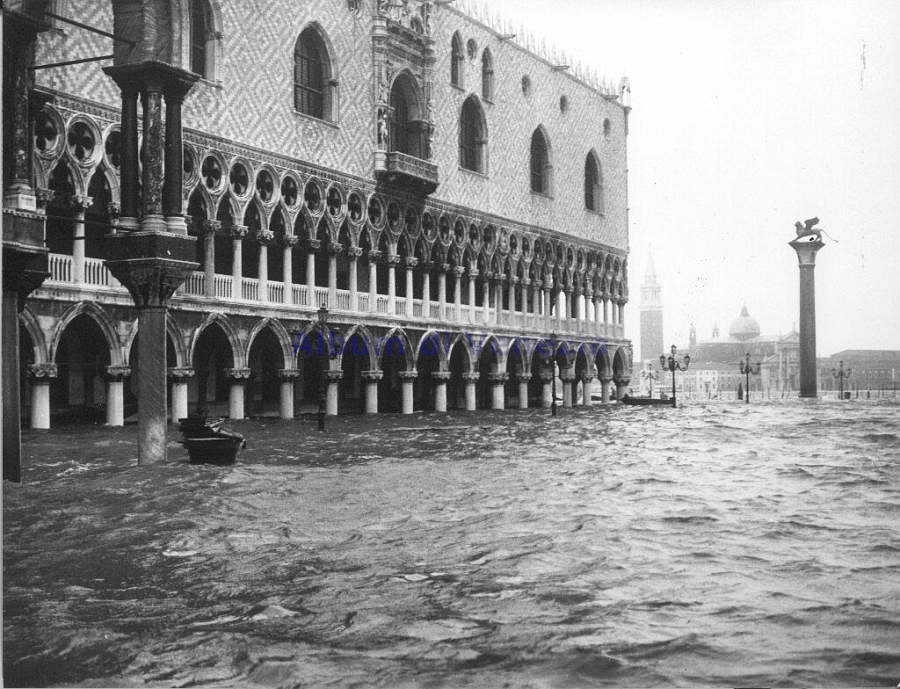
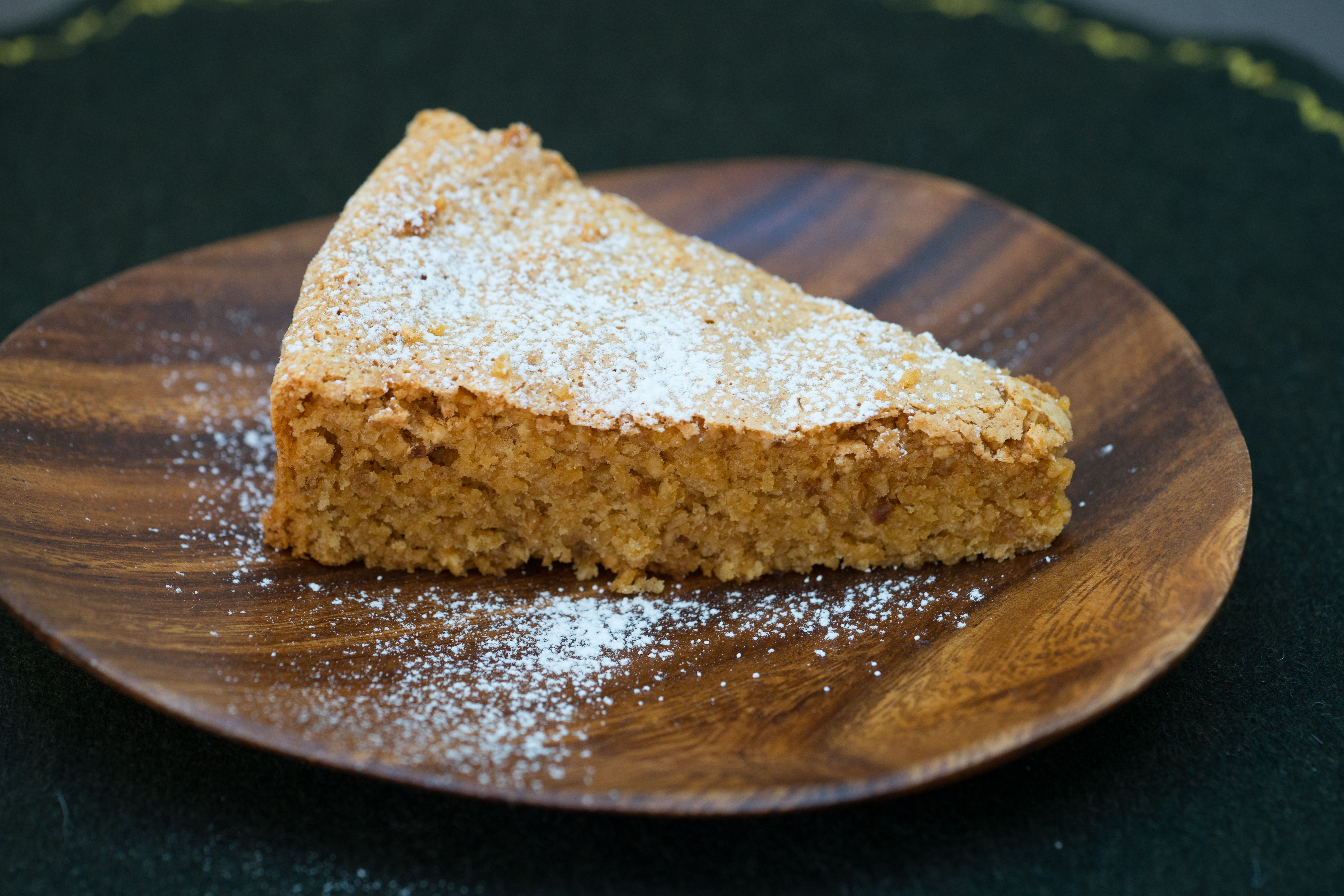
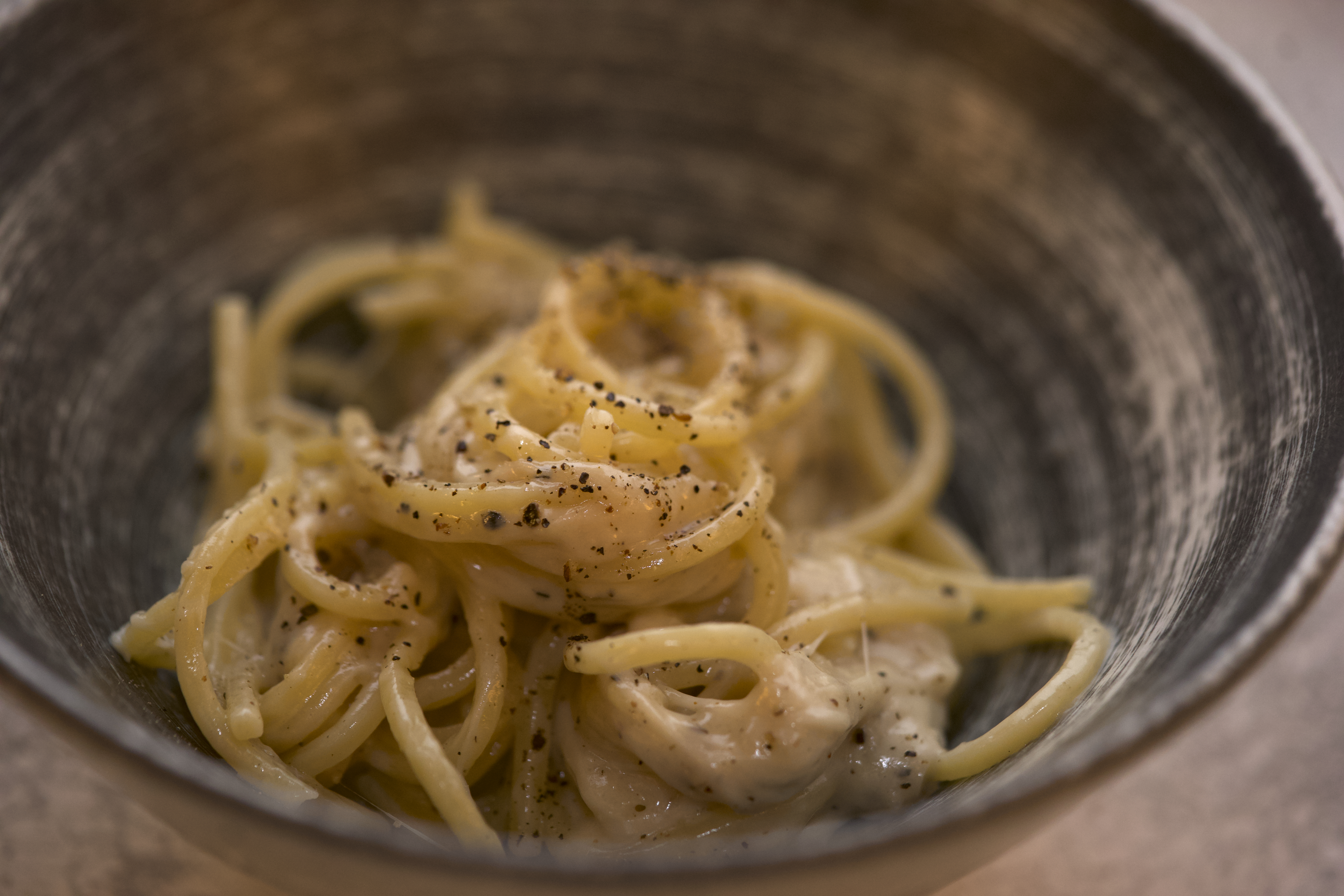
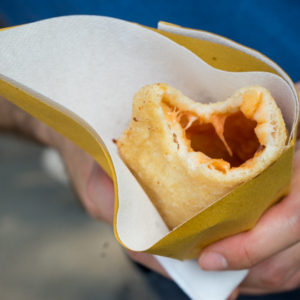
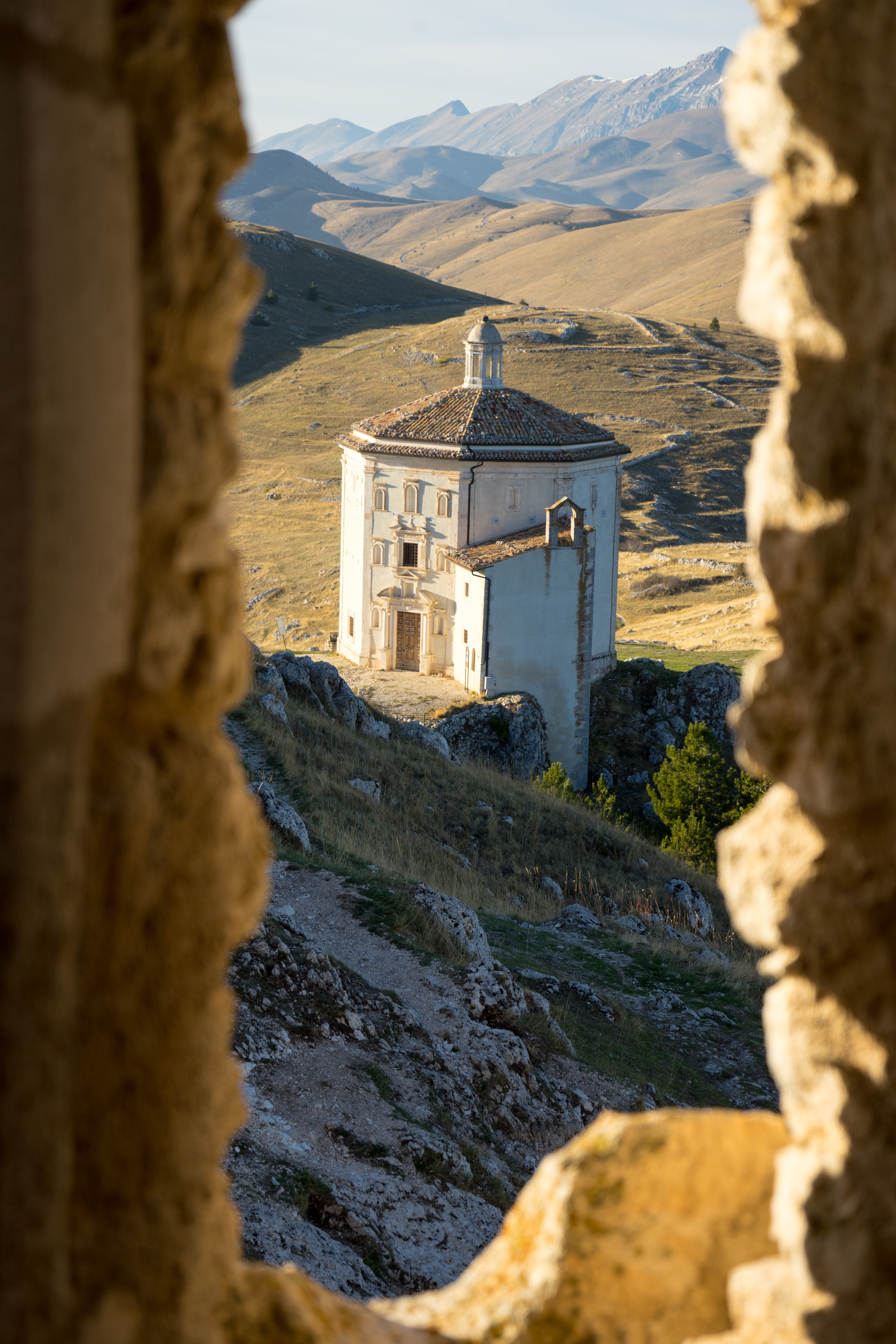
Leave a Reply